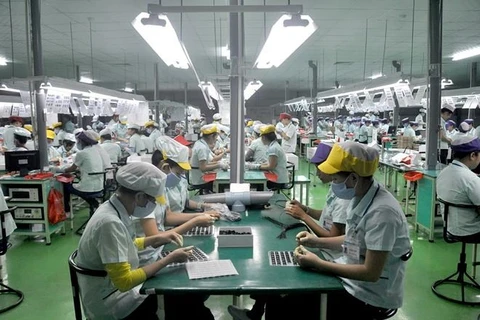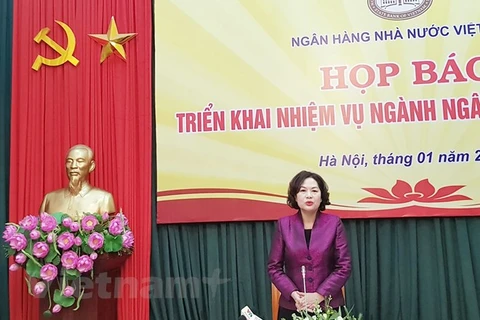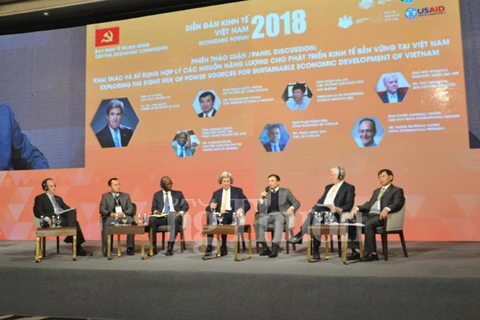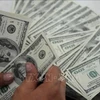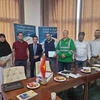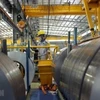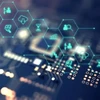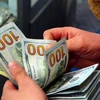Hanoi (VNS/VNA) – Vietnam’s economic growth could reach 6.9 percent in 2019, an increase of 0.1 percent compared to the 2019 socio-economic development plan adopted by the National Assembly, in the context that Vietnam is benefiting from the US-China trade tension.
The statement was made by Nguyen Duc Thanh, Director of the Vietnam Institute for Economic and Policy Research (VEPR) at a conference held in Hanoi on January 10.
However, Thanh noted the use of foreign exchange reserves to stabilise the value of the Vietnamese dong (VND), as the State Bank of Vietnam (SBV) has done in recent years, is not a long-term solution when Vietnam’s foreign exchange reserves are in fact small in scale.
The pressure of exchange rates and inflation along with the regulation of restricting the use of short-term capital for medium- and long-term loans has caused the interest rate of VNĐ to increase significantly at the end of 2018. However, the solution of raising interest rates will lead to implications for businesses when pushing up the cost of capital due to the modest size of the corporate bond market, so the burden on bank credit has not been reduced.
Therefore, the proactive reduction of VND between the depreciation of the yuan (CNY) against the US dollar (USD) is necessary for Vietnam to adapt in the trade war. Such adjustment of exchange rates helps Vietnam take advantage of two large markets to improve production as well as the trade balance, VEPR’s director suggested.
“If there is an appropriate exchange rate policy, Vietnam can benefit from this war, besides receiving many orders shifted from China,” Thanh said.
In terms of long-term impact when the production supply chain shifts from China to neighbouring countries, Vietnam needs to improve the institutional, business and labour quality environments to grasp this opportunity. The challenge for Vietnam is also not small when the infrastructure is not yet ready to receive waves of production, with no economies of scale like China and India.
Such findings from a macroeconomic report released on Wednesday by VEPR showed that Vietnam’s economy in 2018 saw the highest growth in 10 years, at 7.08 percent year-on-year.
Growth came from the solid recovery of the agriculture, forestry, fishery and service sectors, along with the breakthrough of the manufacturing industry. The foreign direct investment (FDI) sector continued to be the main contributor to growth through exports. This sector in 2018 saw an export surplus of 32.81 billion USD (equal to nearly 14 percent of GDP).
As regards business activities, while the number of newly established enterprises and new jobs did not differ much from that of 2017, the number of temporarily ceased enterprises in 2018 was unusually high, which yield questions whether that is because of the economic structural shift or the fundamental risk of the economy.
According to the report, Vietnamese inflation in the fourth quarter of 2018 showed signs of decline thanks to the sudden drop in energy prices. Average inflation (3.54 percent) reached the National Assembly’s target. In the context of erratic global commodity prices, along with the increase of the environmental protection tax on petroleum to maximum level since January 1, 2019, the SBV still needs to evaluate inflation risks in the future to take appropriate measures.
VEPR forecast Vietnam’s economic growth prospects in the long term will continue to depend on foreign direct investment (FDI), resulting in the removal of institutional barriers, improved business environment and equitisation of State-owned enterprises (SOEs).
International trade and investment activities are expected to flourish under new-generation trade deals such as CPTPP and the European Union-Vietnam Free Trade Agreement (EVFTA).
In addition, the US-China trade war is placing Vietnam in front of a rare opportunity that supply chain production is going to leave China. However, to take advantage of this opportunity, it requires a lot of improvements to the institutional environment, as well as business and domestic labour quality, Thanh said.
Speaking at the conference, economist Pham The Anh also recommended that the Government can continue to respond to risks with a more flexible exchange rate policy. In the context that the price of US dollar can increase even though it is not as strong as in 2018, the VND exchange rate should go between big currencies of major export markets with Vietnam to reconcile positive and negative impacts.
“The financial system must be reduced based on leverage when credit growth is very strong in risk areas such as real estate, BOT (Build-Operate-Transfer), BT (Build-Transfer) and consumer credit,” Anh added.-VNS/VNA
VNA


